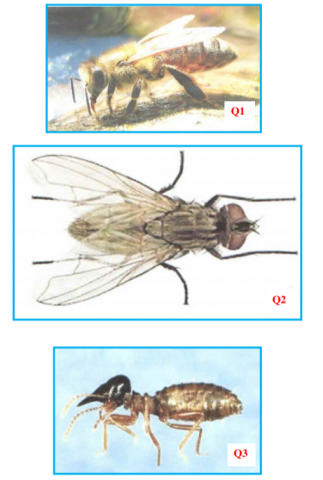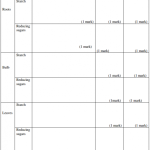KNEC KCSE Biology Paper 3 – 2015 – Machakos County Trial
2015 KCSE Machakos County Trial
Biology Paper 3
You are provided with specimen P. Make a longitudinal section.
(a) (i) Draw and label one of the cut surface of the specimen. (4 Marks)
(ii) Work out the magnification of your drawing. (1 Mark)
(b) (i) What type of fruit is specimen P? (1 Mark)
(ii) Give a reason for your answer. (1 Mark)
(c) (i) Suggest the type of placentation found in specimen P. (1 Mark)
(ii) Give one reason for your answer. (1 Mark)
(d) (i) Name the mode of dispersal of the specimen. (1 Mark)
(ii) State two ways in which specimen P is adapted to be dispersed by the mode named in (i) (4 marks)
15 marks
You are provided with iodine solution, visking tubing, a beaker and a solution labelled X.
Tie one end of the tubing provided with a t1hread tightly. Measure 5ml of solution X. Pour 5ml of solution X into the visking tubing.
Tie the other end of the tubing tightly. Ensure there is no leakage. Rinse the outside of the tubing with distilled water and immerse it with its contents in a beaker containing iodine solution. Allow it to stand for 20 minutes.
(a) (i) Record your observation at the beginning and end of the experiment. Record your results in the table below.
(4 Marks)
(ii) What was the identity of solution x. (1 Mark)
(iii) Suggest the nature of visking tube. (1 Mark)
(iv) Account for the results obtained in a (i) above. (4 Marks)
b) (i) Which physiological process was being investigated in this experiment? (1 Mark)
(ii) State two factors which affects the process being investigated (2 Marks)
13 marks
You have been provided with photographs of specimens labelled Q1, Q2 and Q3. Examine them.
a) By using observable features only, state the phylum and class to which the specimens belong. By using the three specimens,
give reasons for each case.
(a) Phylum (1 Mark)
Reasons (3 marks)
(b) Class (1 mark)
Reasons (3 marks)
(c) Using observable features only, give three differences between specimen Q1 and Q3. (2 Marks)
(d) (i) Apart from locomotion, state the other role of the hind limbs of specimen Q1. (1 Mark)
(ii) How are the hind limbs of specimen Q1 adapted to perform role named in d (i) above. (2 Marks)
9 marks








